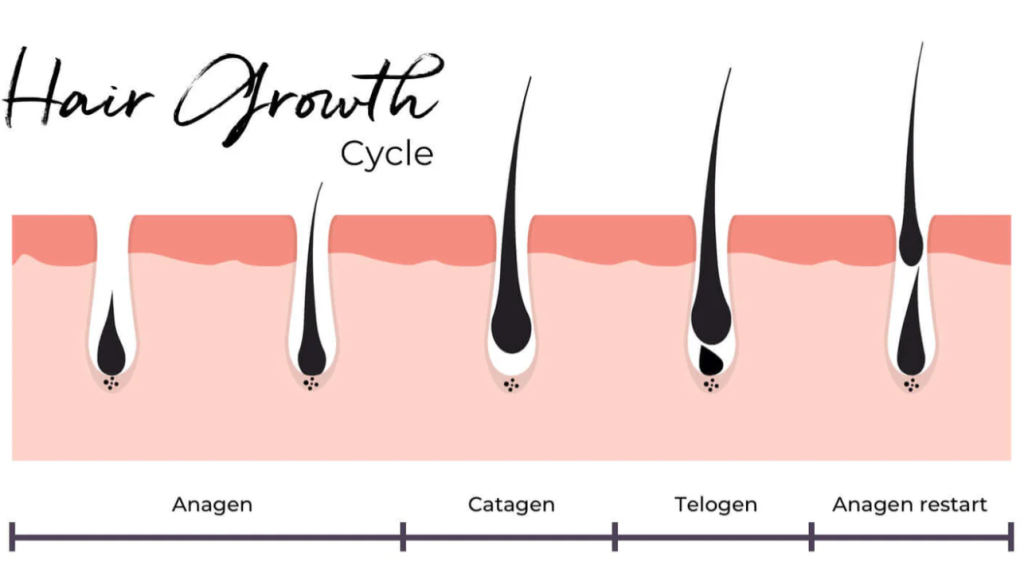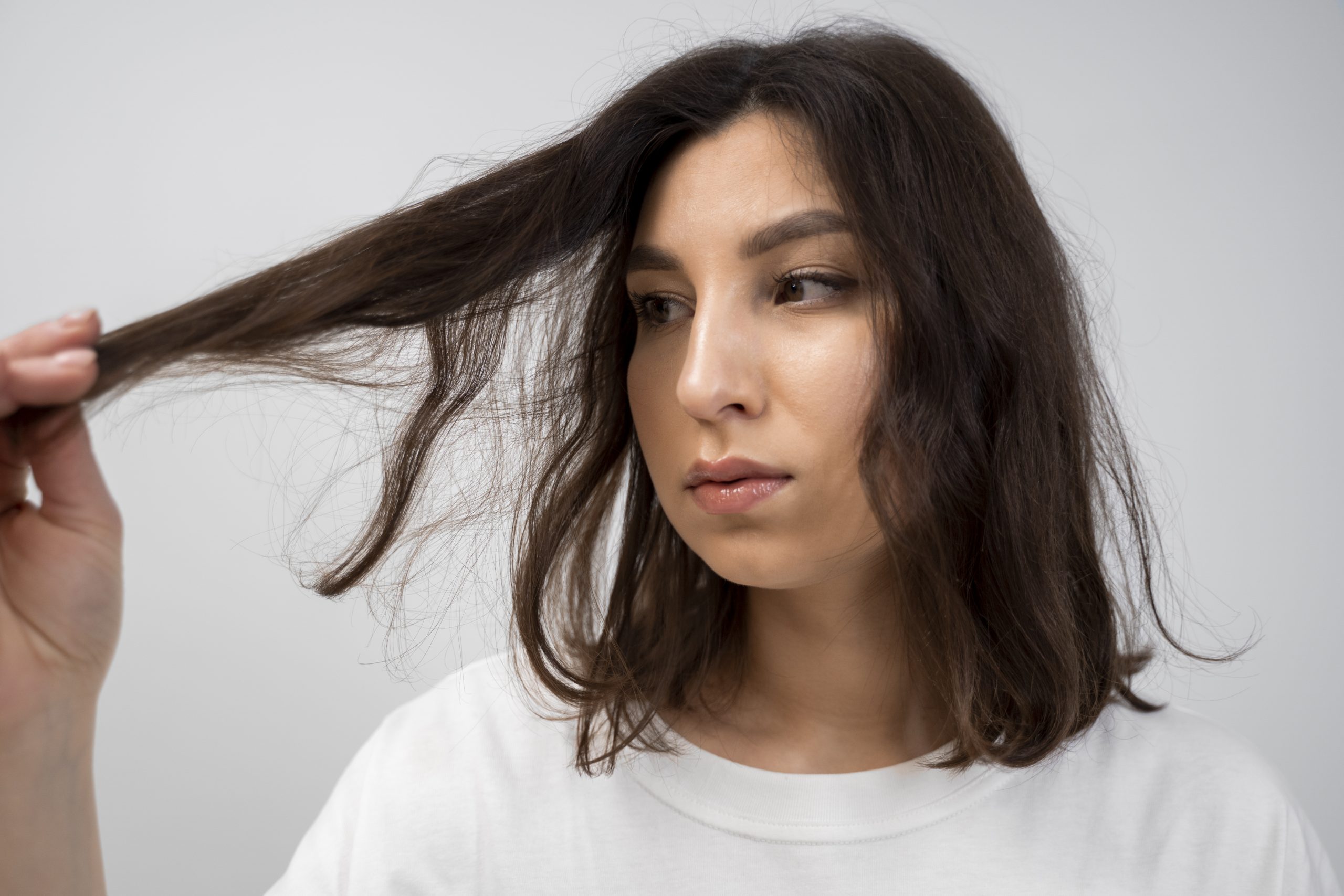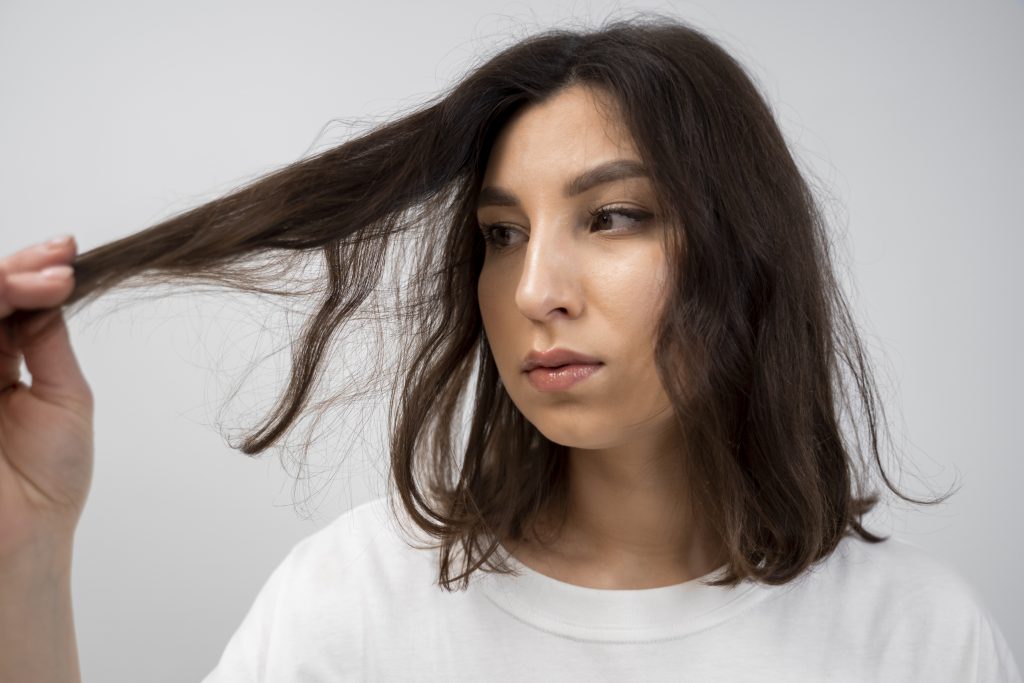Understand Your Hair Growth Cycle: The Key to Growing Stronger Hair

Have you ever wondered why your hair seems to grow faster on some days and sheds more at certain times of the year? Welcome to the world of the hair growth cycle, where your hair’s behavior follows a carefully orchestrated pattern. Understanding this cycle could be the key to reaching your hair’s full potential and transforming your hair care routine.
Let me take you through the hair growth cycle’s intricacies, looking into the hidden mechanisms that govern your locks’ length, strength, and overall health.
The Science Behind Hair Growth Cycles
Hair growth is a complex process that occurs in a continuous cycle, consisting of three main phases: anagen, catagen, and telogen. A variety of factors, including genetics, hormones, and environmental influences helps regulate these phases.

- Anagen Phase (Growth): The anagen phase is the active growth phase of hair follicles. It begins in the hair follicle’s bulb, where specialized cells called matrix cells divide rapidly. These cells are responsible for producing the hair shaft, which is made up of a protein called keratin. As the hair shaft grows, it passes through the hair follicle and emerges from the scalp. The length of the anagen phase varies depending on genetics, age, and other factors but typically lasts between two to seven years. Approximately 85% to 90% of the hairs on your scalp are in the anagen phase at any given time.
- Catagen Phase (Transition): The catagen phase is a short transitional phase that marks the end of the anagen phase. It is often referred to as the “holding phase” because the lower part of the hair follicle shrinks and attaches to the hair shaft, cutting off its blood supply. This phase lasts for about two to three weeks. Only 1% to 3% of hairs are in this phase at any given time.
- Telogen Phase (Resting): The telogen phase is a resting phase where the hair follicle is dormant. It can also be referred to as the “shedding” phase because during this phase, the old hair is pushed out by the new hair growing beneath it. The hair follicle remains inactive during this phase, and no new hair growth occurs (hence the term ‘resting’). The telogen phase lasts for about three to four months and accounts for approximately 10% to 15% of hairs on the scalp.
Shedding Hair? Don’t Worry, Its Part of the Cycle
During the telogen phase, normal hair shedding occurs, with an average of 75 to 100 hairs shed per day. Shedding is a natural and essential part of the hair growth cycle. While it might seem alarming to see more hair fall out during this phase, shedding is a sign that the hair growth cycle is functioning properly. Most people tend to freak out about shedding because they may not understand that it’s a normal process. However, shedding allows new, healthy hair to replace the old strands, ensuring that your hair remains strong and vibrant. Understanding this aspect of the hair growth cycle can help alleviate concerns about hair loss and promote a healthier attitude towards hair care.
Factors Affecting the Hair Growth Cycle
Several factors can influence the hair growth cycle, including:
- Genetics:
Your genes play a significant role in determining the length and quality of your hair growth cycle. Some people have a longer anagen phase, resulting in longer hair, while others have a shorter anagen phase, leading to shorter hair growth. - Age:
As you age, the hair growth cycle can shorten, leading to thinner and shorter hair. Additionally, the rate of cell division in the hair follicles slows down, resulting in slower hair growth. - Hormones:
Hormonal changes, such as those experienced during puberty, pregnancy, and menopause, can affect the hair growth cycle. For example, an increase in androgens (male hormones) can shorten the anagen phase and lead to hair loss. - Nutrition:
A balanced diet rich in vitamins, minerals, and proteins is essential for healthy hair growth. Nutritional deficiencies can disrupt the hair growth cycle and lead to hair loss. - Stress:
Chronic stress can disrupt the growth cycle and lead to excessive shedding. Finding ways to manage stress, such as through exercise, meditation, or therapy, can help maintain a healthy hair growth cycle. - Environment:
Environmental factors such as pollution, sun exposure, and humidity can also impact the hair growth cycle. Protecting your hair from these environmental stressors can help maintain its health and vitality.
Seasonal Hair Shedding
Have you ever noticed that you seem to shed more hair during certain times of the year? It’s not uncommon to experience increased hair shedding during the fall and winter months. This phenomenon, known as seasonal hair shedding, is influenced by several factors. This can be attributed to factors such as reduced sunlight, changes in temperature and humidity, and indoor heating. Reduced sunlight exposure in the fall and winter can disrupt the hair growth cycle, leading to increased shedding. Cooler temperatures and changes in humidity levels can affect the scalp and hair, making it more prone to breakage and shedding. Dry indoor air from heating systems can also contribute to dryness and breakage of the hair. While seasonal hair shedding is normal, maintaining a healthy diet, protecting your hair, managing stress, and seeking help if needed can help minimize its impact.

Caring for Your Hair
To maintain a healthy hair growth cycle, it’s essential to care for your hair properly. Here are some tips:
- Eat a Balanced Diet:
Ensure your diet includes plenty of fruits, vegetables, lean proteins, and whole grains to provide essential nutrients for healthy hair growth. - Avoid Harsh Treatments:
Limit the use of heat styling tools, chemical treatments, and tight hairstyles that can damage the hair follicles and disrupt the hair growth cycle. - Use Hair Care Products For Your Hair Type:
Choose shampoos, conditioners, and styling products that are gentle on your hair and scalp to avoid irritation and damage. - Manage Stress:
Practice stress-reducing techniques such as meditation, yoga, or deep breathing exercises to help maintain a healthy hair growth cycle. - Regular Trims:
Getting regular trims every 8-12 weeks can help prevent split ends and breakage, promoting healthier hair growth.
Understanding the hair growth cycle is the key to maintaining healthy, beautiful hair. By following these tips and adopting a hair care routine that promotes a healthy growth cycle, you can enjoy longer and stronger hair.
Browse Other Posts
The Great Debate: Blow Dry vs. Air Dry
Should you blow dry or air dry your hair? Both hair drying methods have loyal…
Last-Minute Hair Service Changes? Here’s How to Navigate
Feeling inspired to switch up your regular salon service on the day of your appointment?…
Micellar Water: Your New Go-To for Fresh Hair Without Dry Shampoo
In the quest for hair that’s fresh and voluminous without the hassle of traditional dry…
What is your Hair Type? – Your Easy Guide to Hair Types
Your hair is as unique as you are, and understanding its type is crucial for…
The Postpartum Hair Loss Panic – Keep Calm and Grow On
Bringing new life into the world is a miraculous experience, but it can also bring…
Understand Your Hair Growth Cycle: The Key to Growing Stronger Hair
Have you ever wondered why your hair seems to grow faster on some days and…






